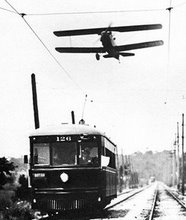July 15, 2008
French Trains Turn $1.75B Profit, Leave American Rail in the Dust
by Ben Fried
by Ben Fried
The Guardian reports that SNCF, France's national rail company, is taking advantage of a boom in ridership to make aggressive plans for expansion. While SNCF positions itself to help ease the impact of high fuel prices on the French public, what are American leaders preparing to do? Drilling offshore and taking a few hits from the strategic petroleum reserve aren't going to cut it.
Over in France, all the new riders have SNCF chairman Guillaume Pepy thinking big:
The state-owned SNCF delivered a net €1.1bn (£875m) profit last year and first-half figures, due next week, are said to be sparkling. Pepy envisages up to 80m extra passenger trips this year or an increase of around 8%.
"This change will speed up because we are facing a twin energy and environment crisis," he says, pointing to surging fuel costs and growing personal worries about carbon footprints. "People want sustainable mobility and, in France, more trains and more SNCF."
The growing number of passengers is maxing out the current system, which Pepy sees as an opportunity, especially in a time of escalating fuel prices. He wants to double the size of SNCF's high-speed network by 2015, make rail stations into multi-modal hubs, and capture market share from energy-intensive air and road travel.
The new SNCF chairman sees rail stations, mainly in the regions, becoming new transport (and commercial) hubs not just for trains but for buses and trams -- "all those places where people don't want to bring their cars."
SNCF executives believe rail can take market leadership from air and road on journeys up to four hours long and point to the success of Eurostar (part owned by the group) in increasing traffic so far this year by around a fifth on the back of shorter journey times between London and Brussels/Paris. You can even get to Marseille from Paris in little more than three hours.
Contrast to the attitude among many politicians and opinion leaders here in the U.S. -- typified by this Wall Street Journal op-ed -- which views public management of rail systems skeptically, to put it mildly. Congress may be taking a long-overdue step toward investing more in Amtrak, but that is triage compared to the direction SNCF is heading in, as high-speed train service in
Europe widens its already considerable performance lead over American intercity rail.





















No comments:
Post a Comment